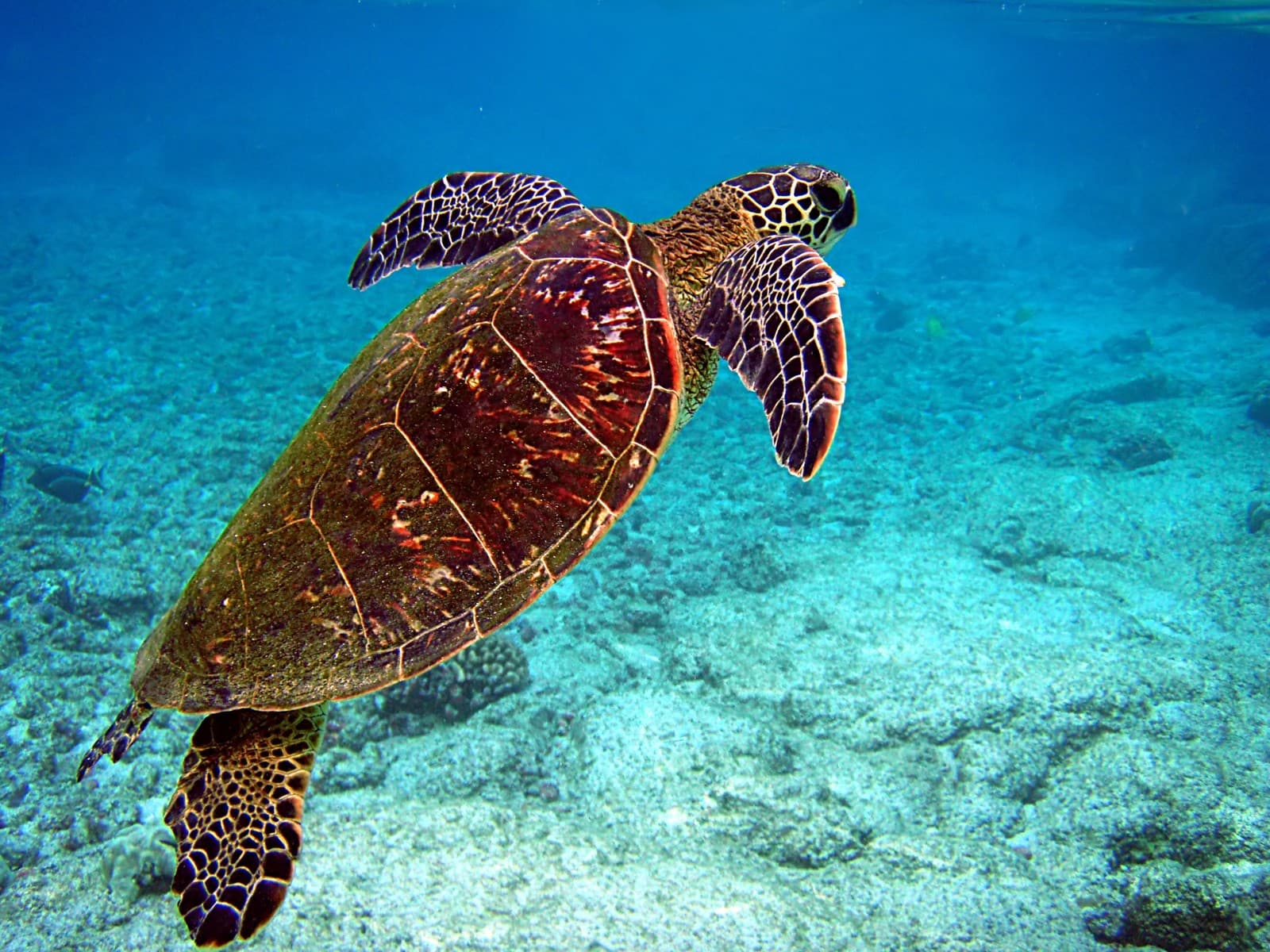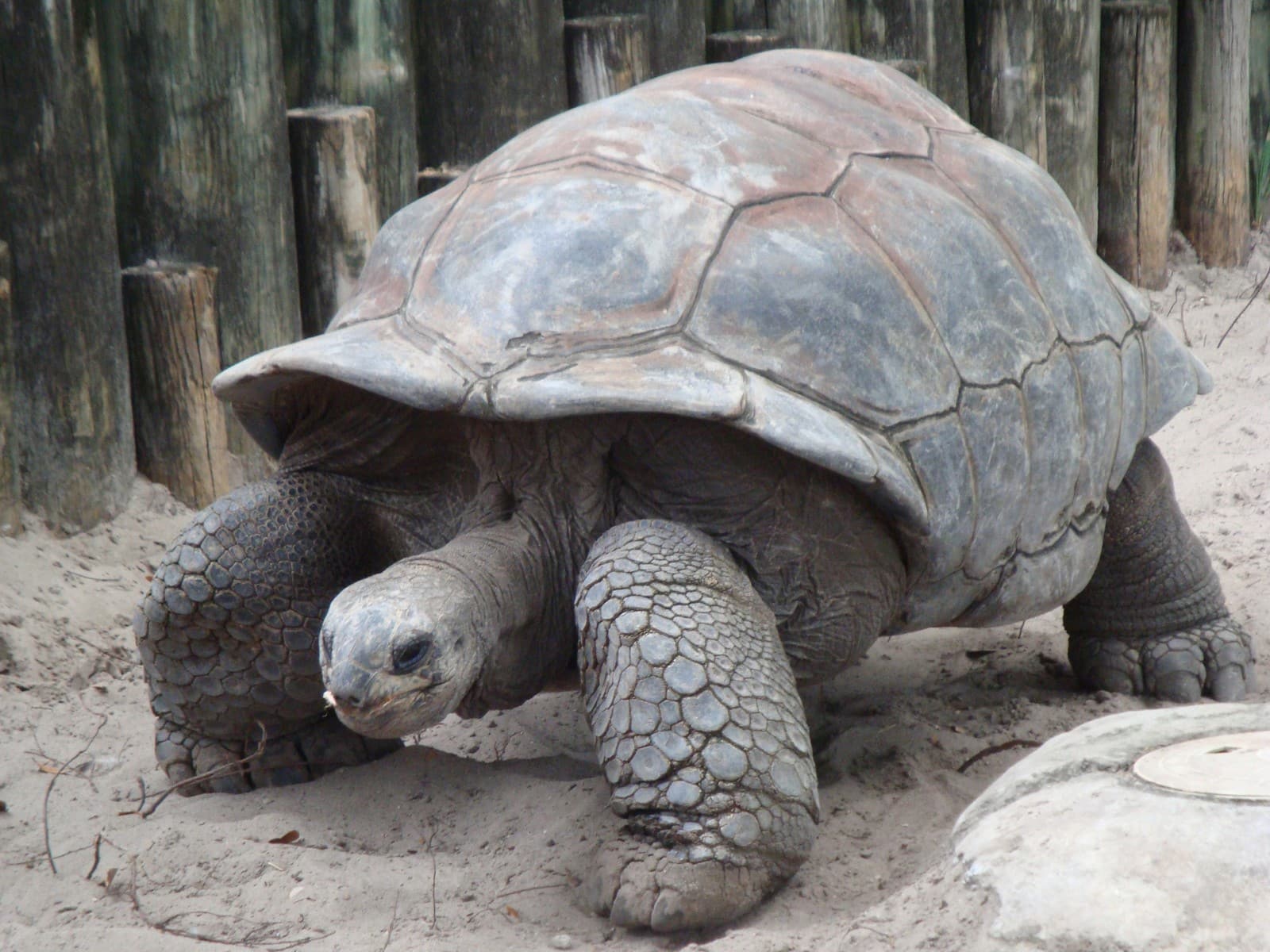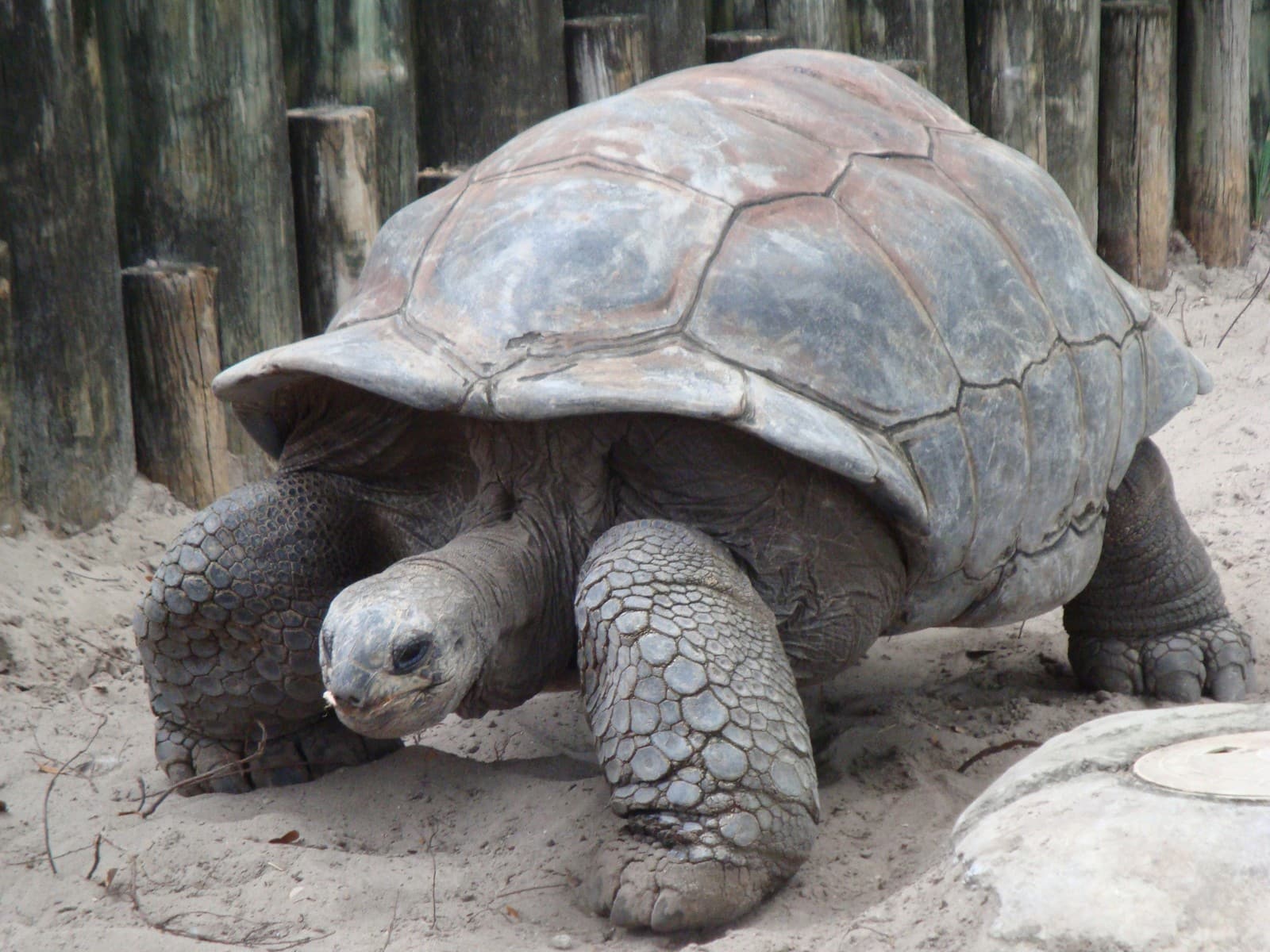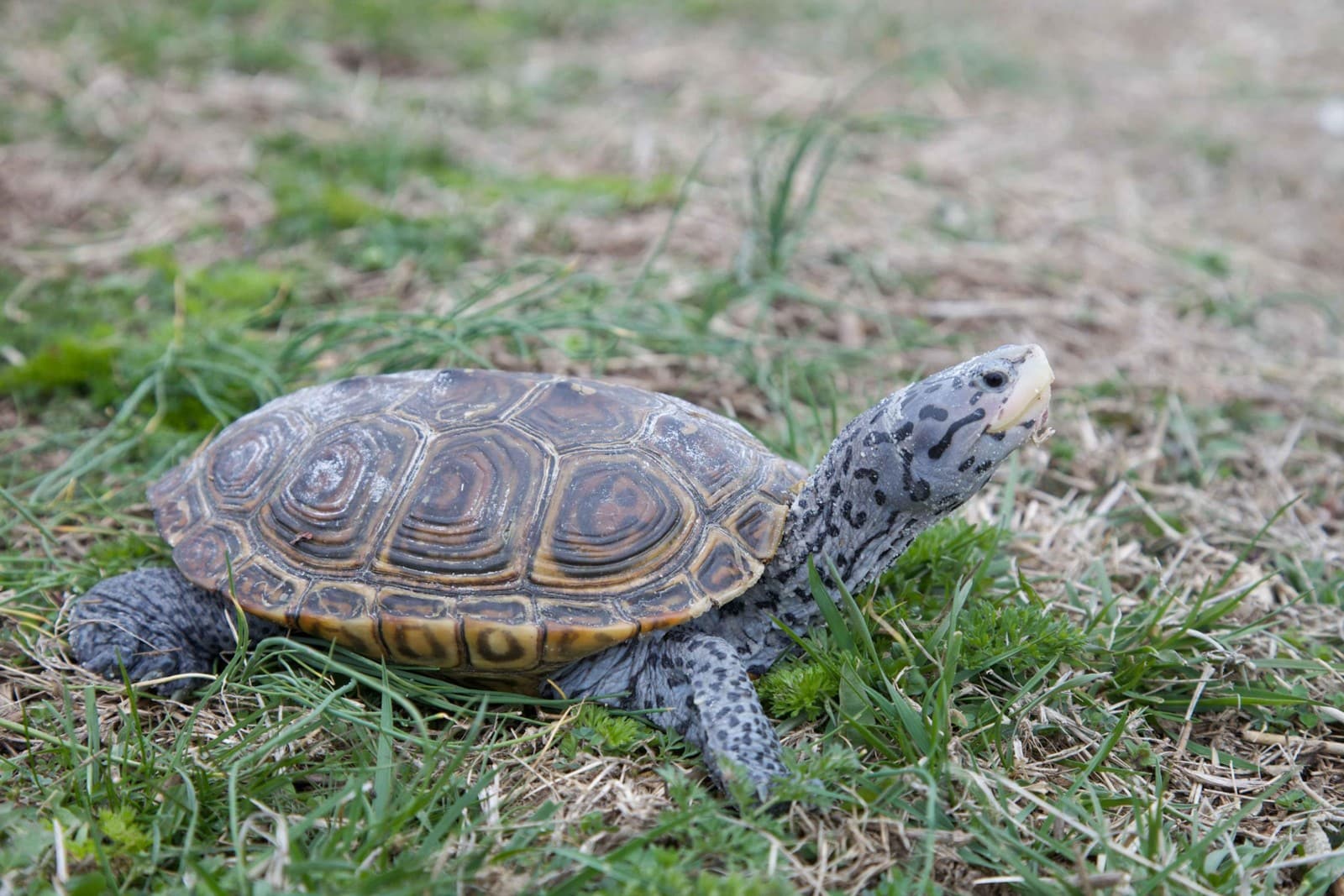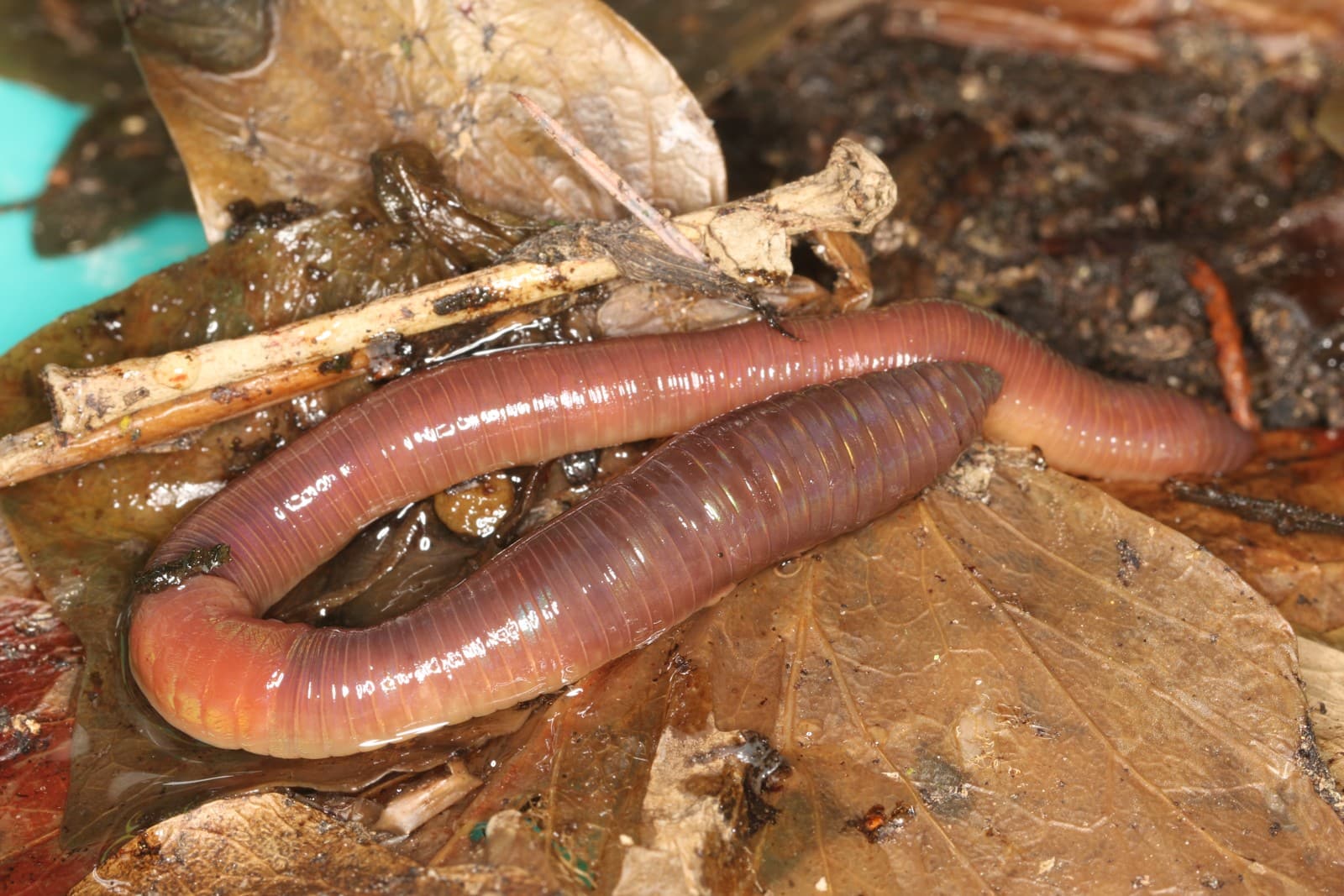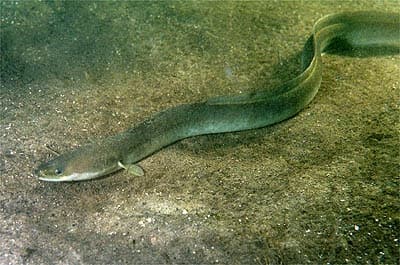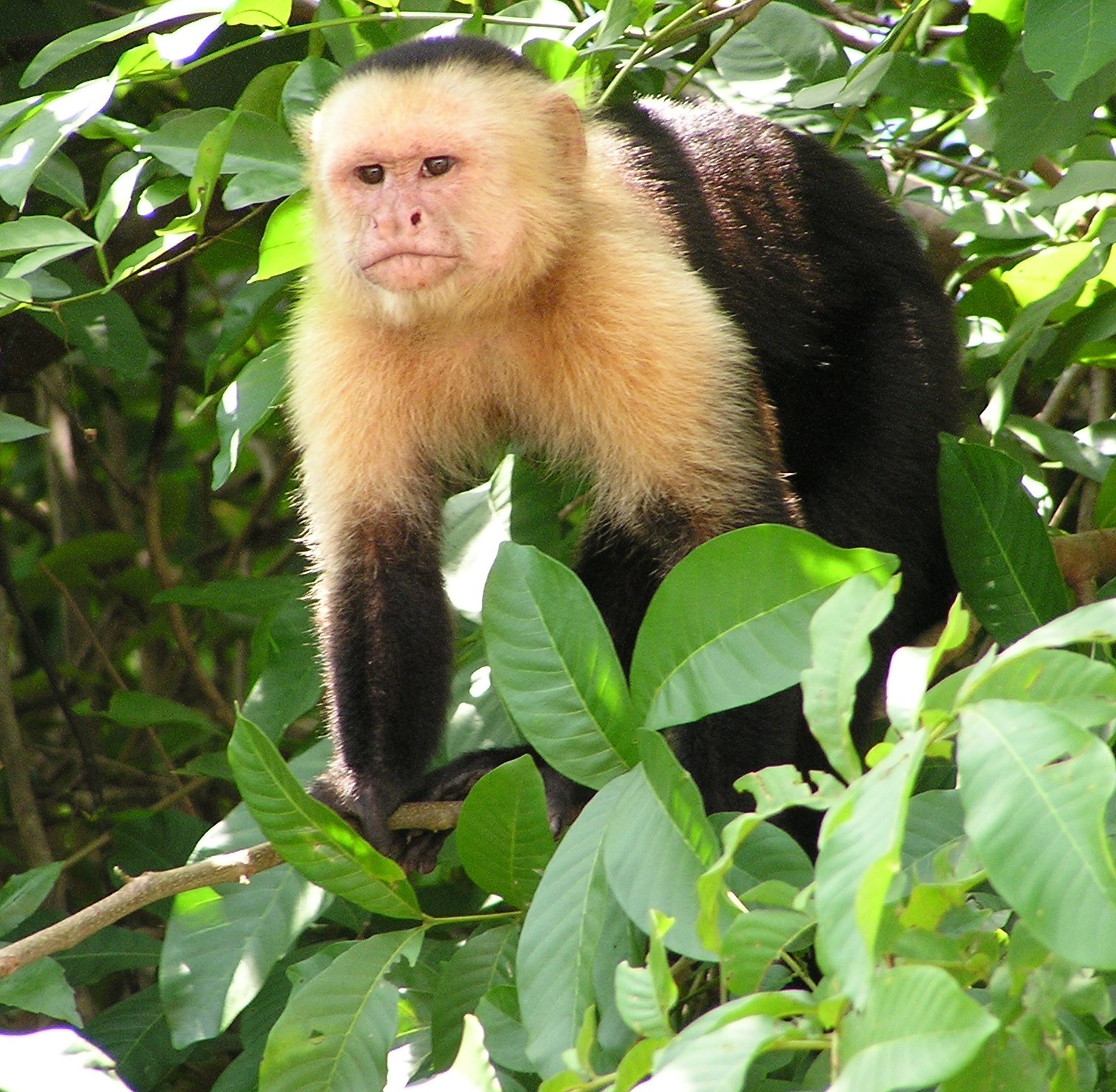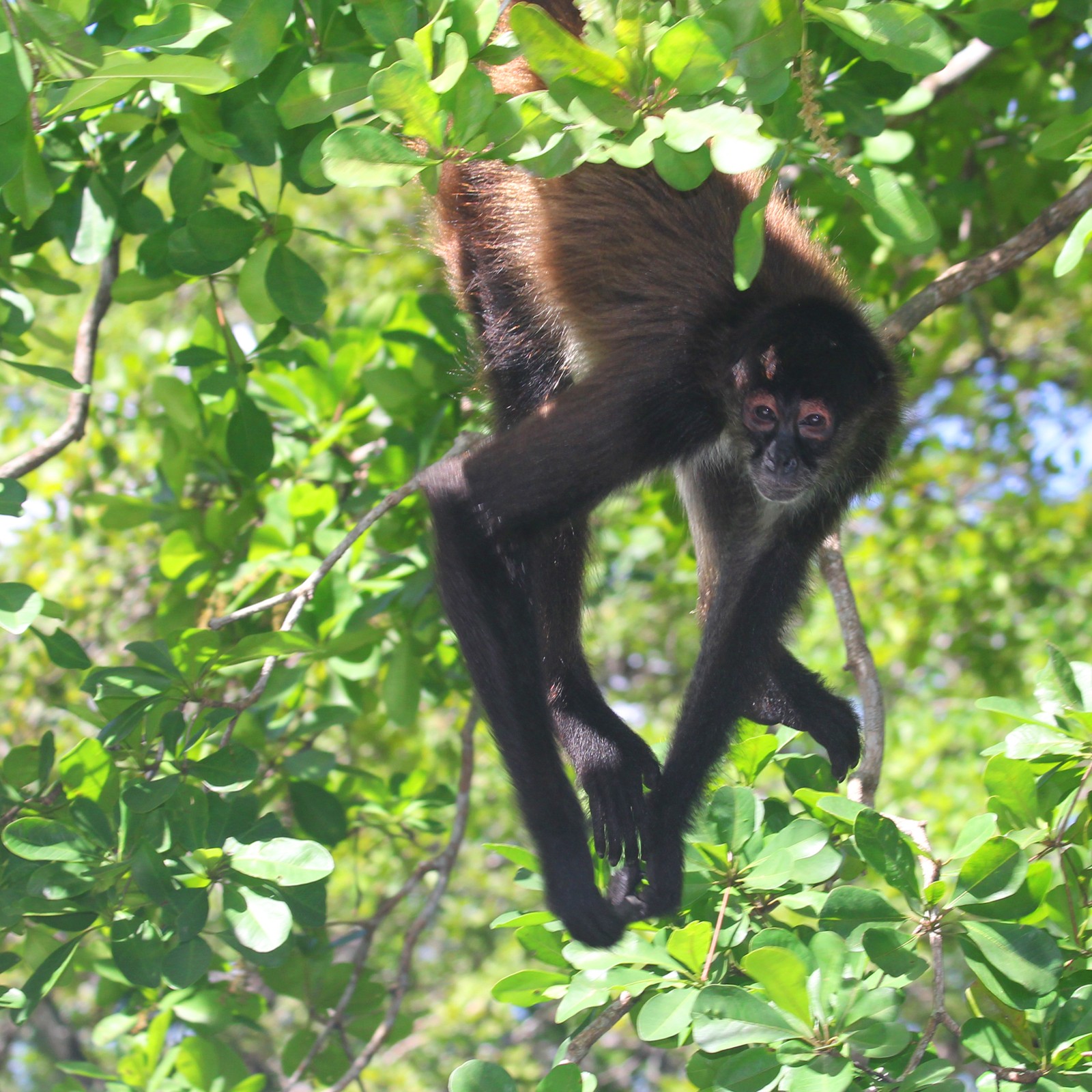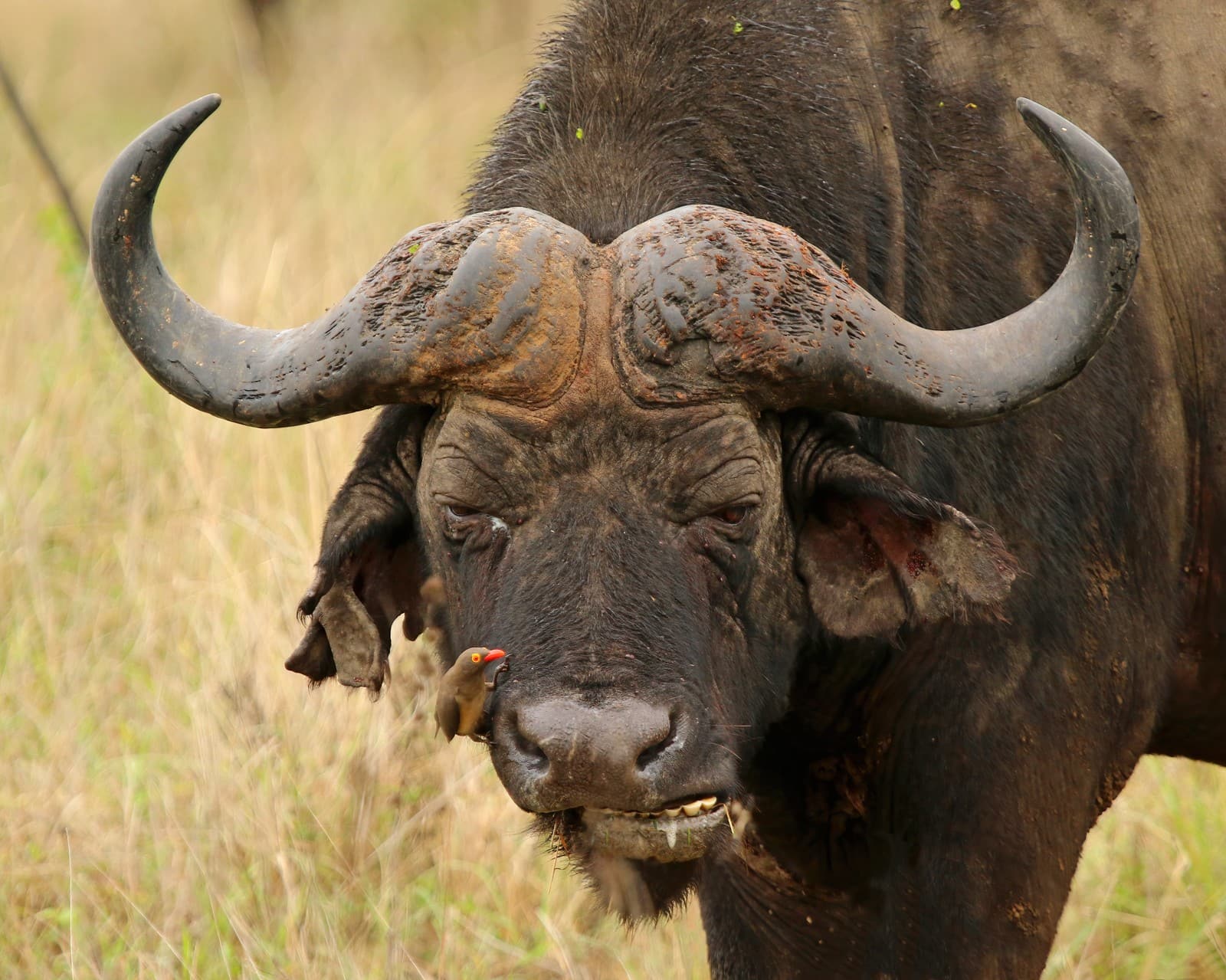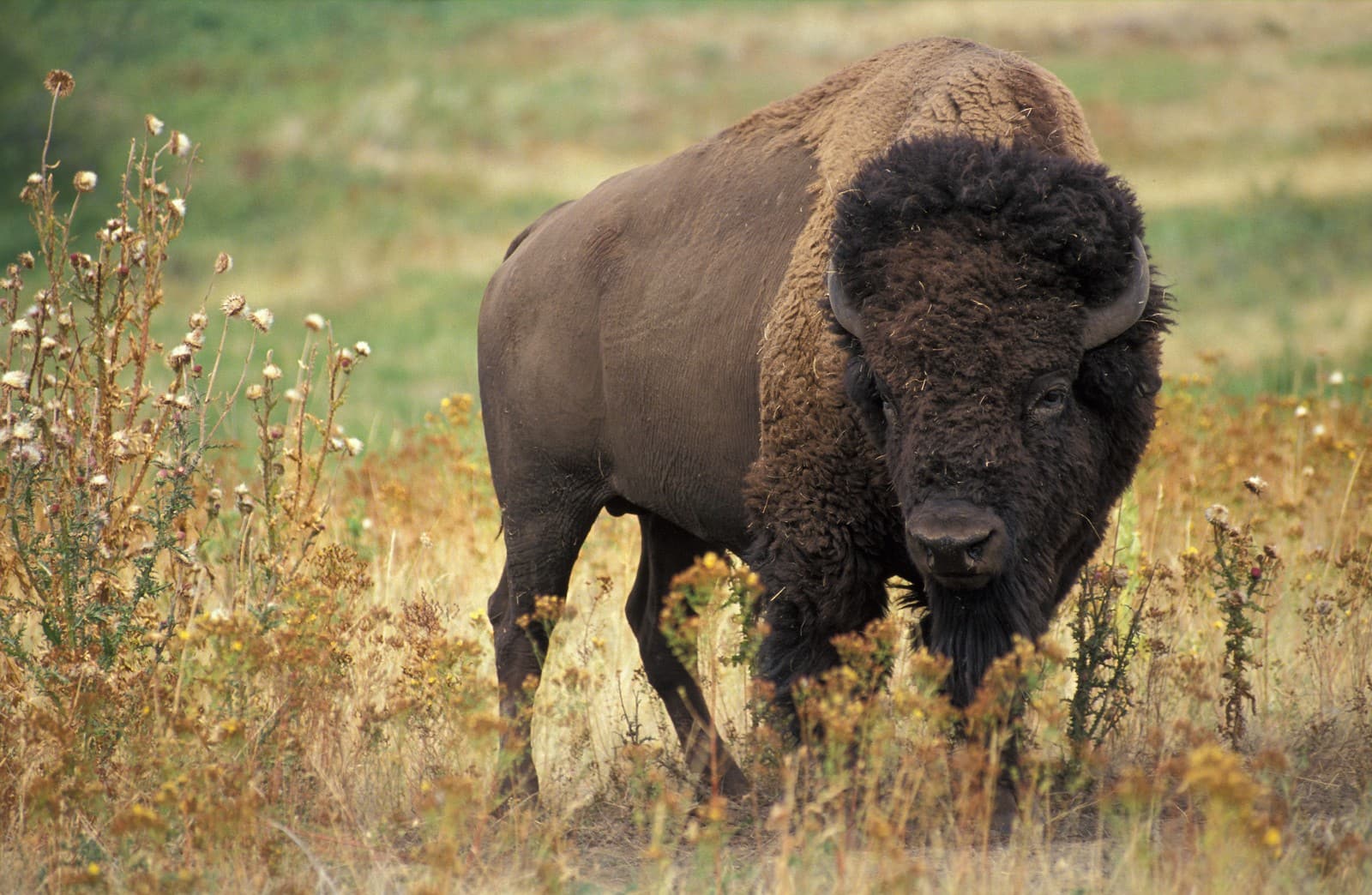Turtle vs Tortoise: A Complete Comparison
While turtles and tortoises both belong to the order Testudines, these remarkable reptiles have evolved distinct characteristics that set them apart. The most fundamental difference between turtles and tortoises lies in their habitat adaptation – turtles are primarily aquatic or semi-aquatic creatures with streamlined shells and webbed feet, while tortoises are strictly terrestrial with dome-shaped shells and sturdy, elephant-like legs.
In my two decades of studying these fascinating creatures across six continents, I’ve observed that sea turtles can reach swimming speeds of up to 22 mph (35 km/h), while tortoises typically move at a leisurely pace of 0.2-0.5 mph (0.3-0.8 km/h) on land. This stark difference in mobility reflects their evolutionary adaptations to vastly different environments.
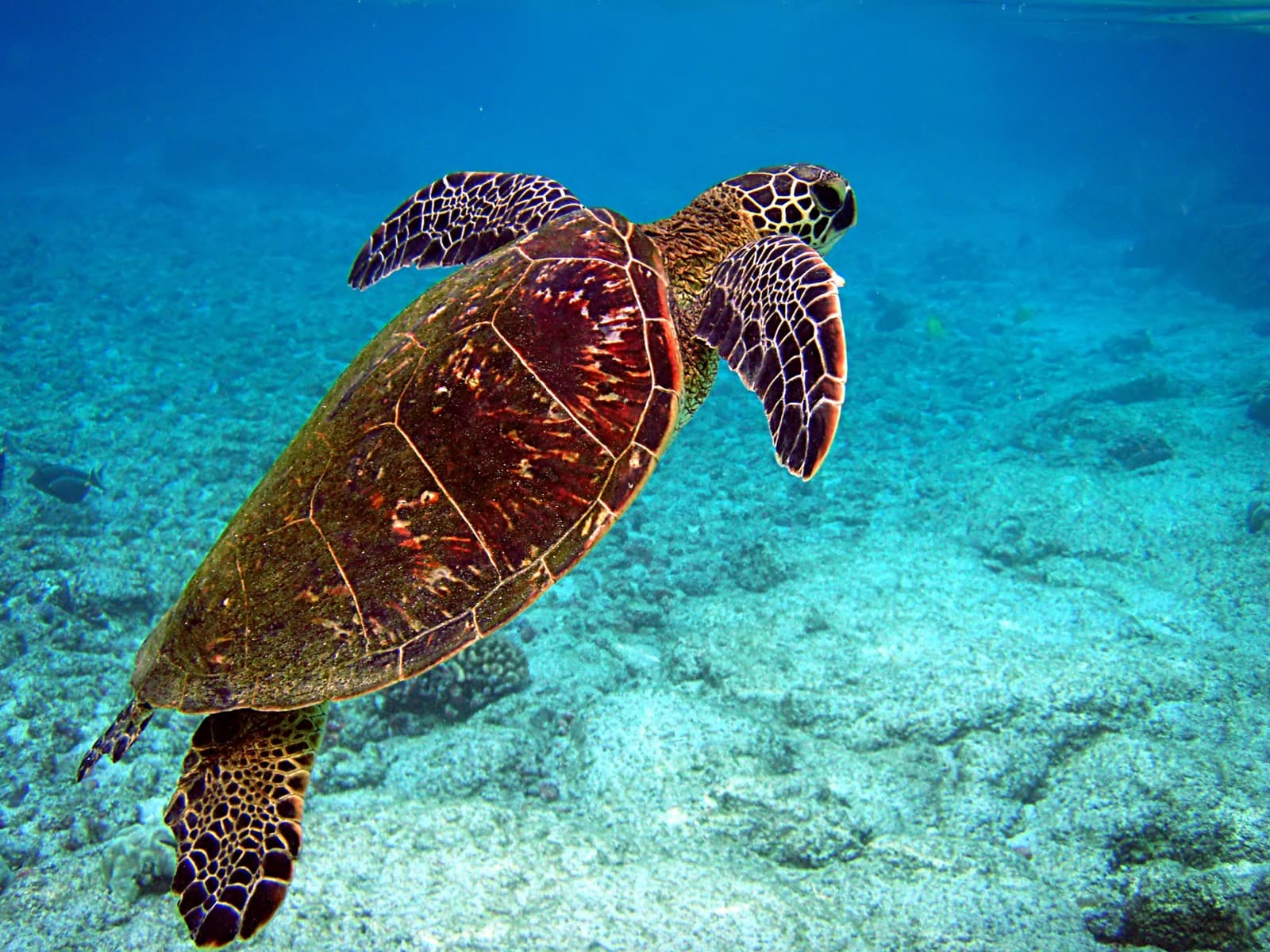
© Brocken Inaglory / CC BY-SA 3.0
A Green Sea Turtle demonstrates the hydrodynamic shell shape and powerful flippers that characterize aquatic turtle species, perfectly adapted for life in marine environments.
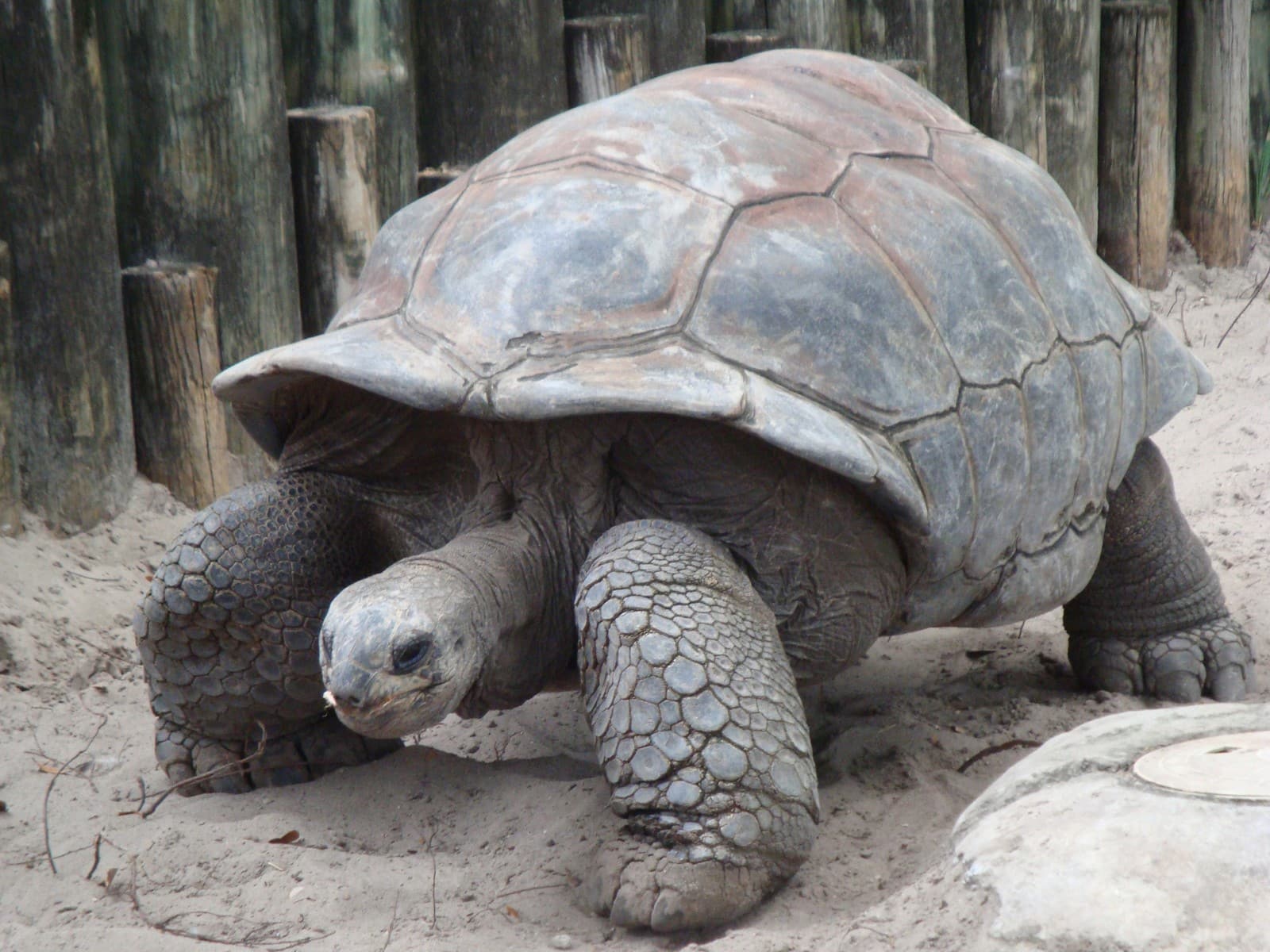
© Childzy at en.wikipedia / CC BY-SA 3.0
The Galápagos Giant Tortoise exhibits the classic high-domed shell and robust columnar legs characteristic of terrestrial tortoises, evolved for supporting their substantial weight on land.
Key Differences Between Turtles and Tortoises
| Feature | Turtle | Tortoise |
|---|---|---|
| Habitat | Aquatic or semi-aquatic environments | Exclusively terrestrial |
| Shell Shape | Flat and streamlined | High-domed and heavy |
| Feet/Limbs | Webbed feet or flippers | Sturdy, elephant-like legs |
| Lifespan | 20-50 years (average) | 80-150 years (some species) |
| Size Range | 4-6 feet (1.2-1.8m) for largest species | Up to 4 feet (1.2m) for largest species |
| Diet | Omnivorous (most species) | Primarily herbivorous |
Habitat and Adaptation
Turtles have evolved specialized features for life in or near water. Their streamlined shells reduce drag while swimming, and their powerful flippers or webbed feet provide excellent aquatic mobility. Most species can hold their breath for 4-7 hours underwater during active periods and up to several months during brumation.
Tortoises, conversely, are terrestrial specialists. Their high-domed shells offer protection from predators and provide space for their lungs to expand fully. Their columnar legs with sharp claws are perfectly adapted for traversing rough terrain and digging burrows.
Shell Structure and Purpose
The most visible difference in the turtle vs tortoise comparison lies in their shell architecture. Turtle shells are typically flatter and more hydrodynamic, with some species having softer shells that allow greater mobility. The average turtle shell weighs 15-25% of their total body mass.
Tortoise shells are more massive and dome-shaped, accounting for 30-40% of their total body weight. This robust structure provides enhanced protection from predators and helps regulate body temperature in arid environments.
Diet and Feeding Habits
Turtles display diverse feeding strategies, with most species being omnivorous. Sea turtles primarily consume jellyfish, crustaceans, and sea grass, while freshwater turtles eat fish, insects, and aquatic plants. Their sharp-edged beaks are adapted for tearing and crushing underwater prey.
Tortoises are almost exclusively herbivorous, feeding on grasses, leaves, flowers, and fruits. Their serrated beaks are specially designed for cropping vegetation, and they have longer intestines to process their fiber-rich diet effectively.
Who Would Win: Turtle vs Tortoise?
In a hypothetical encounter, the outcome would depend entirely on the environment. In water, a turtle’s superior speed (up to 22 mph) and maneuverability would give it an overwhelming advantage. On land, a tortoise’s protective high-domed shell and significant weight (up to 919 lbs/417 kg for the largest specimens) would make it practically invincible to most turtle species.
Conservation Status and Threats
Both groups face significant challenges in the modern world. Sea turtles are particularly vulnerable to plastic pollution and fishing net entanglement, with six of seven species currently endangered. Tortoises face habitat loss and illegal pet trade pressures, with several species critically endangered, including the famous Galápagos Giant Tortoise.
Understanding the distinct characteristics of turtles vs tortoises isn’t just academic – it’s crucial for conservation efforts and ensuring these remarkable reptiles continue to thrive in their respective habitats for generations to come.
